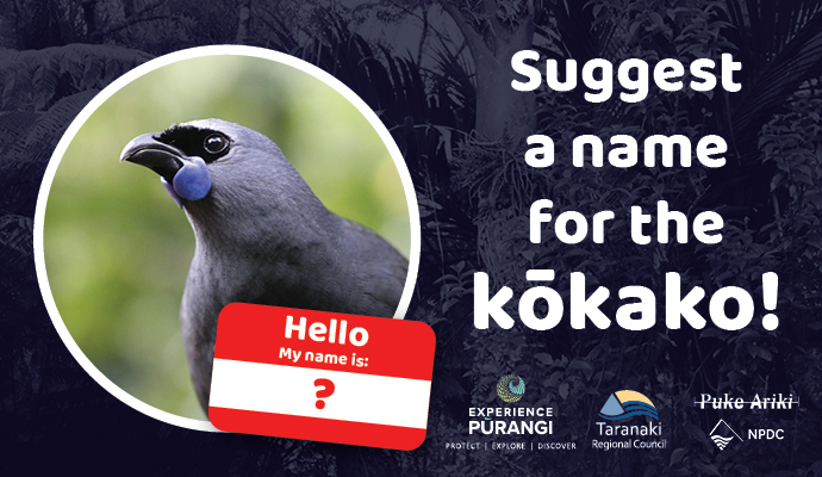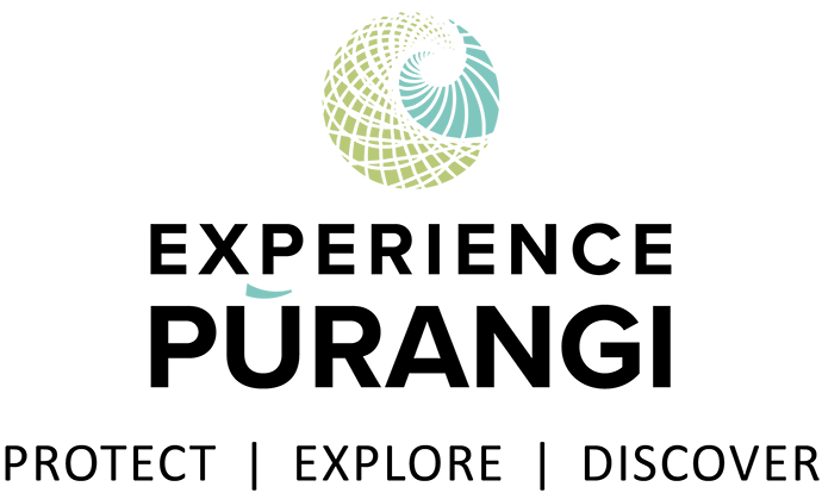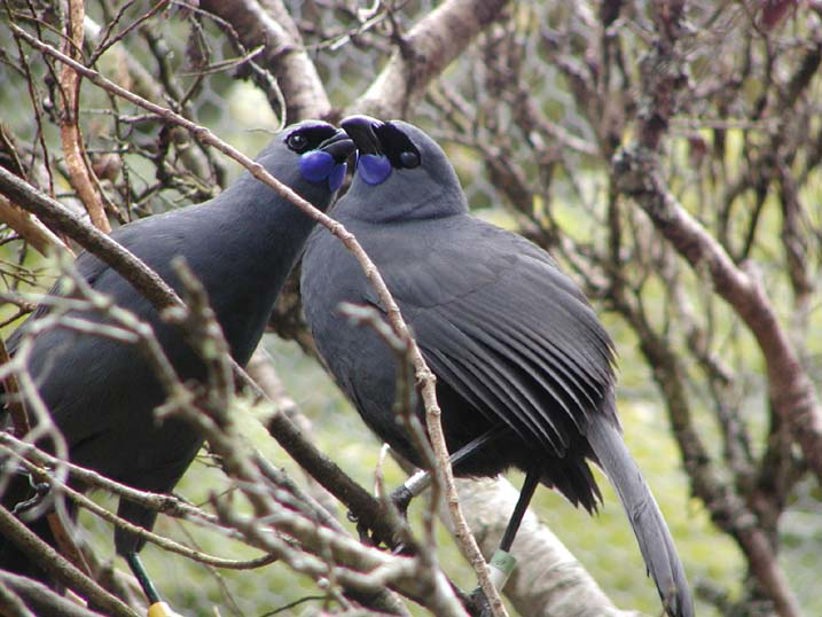Our Kōkako

The distinct sound of the kōkako used to ring out over the Taranaki treetops. The population was largely destroyed by rats, stoats and possums and by the 1990s only male birds survived in our region. Conservation groups and local iwi worked together to capture a male kōkako and take him to a breeding facility outside of Taranaki. He was Tamanui and his story and interactive game feature in our Taranaki Naturally Gallery.
Name our Kōkako
Kōkako are now being reintroduced to Taranaki by Experience Pūrangi and we're excited to be part of this process. Puke Ariki has adopted a kōkako and now we need your help to choose a name for him! Come in to the Museum and complete our brand new kōkako scavenger hunt and give us your suggested name.

We're going to get regular updates from the conservation manager at Experience Pūrangi telling us what is happening with the kōkako who are living there. We'll post the updates on this page, so make sure you check back here for regular Kōkako Cackles with Kat.
About Experience Pūrangi
There are less than 1000 pairs of kōkako in New Zealand, without help they will become extinct. In 2010 Experience Pūrangi identified an area that would be a suitable habitat for kōkako. They carried out intensive predator control to make sure the area was safe and habitable for the birds to live in. In 2018 20 birds were released into the area, with more planned to be joining them soon.

A bit more about Kōkako
Kōkako live in forest canopies and with their long legs and heavy bodies, they prefer to run and bound from branch to branch rather than soar through the air.
They feed on berries, bugs and leaves. They are vulnerable to introduced pests like rats, possums and stoats. These predators almost wiped out the North Island kōkako by attacking their nests, but conservation efforts are helping and the population has increased from about 330 pairs in 1999 to about 1595 in 2017.

Kōkako are perhaps best known for their complex song, which helps define their territory and is often heard as a duet.
Listen to the Kōkako's song
Kōkako Cackles with Kat
Every few months Kat the Conservation Manager will send us updates on the Experience Pūrangi Kōkako.
May 2021
We’re now at the end of the kōkako breeding season and the kōkako have quietened down with the days getting colder. Over the last few months the field team often heard the kōkako calling out to their partners while we were out checking traps. We didn’t have too much luck seeing the nests – the kōkako were quite elusive this season and stayed high in the canopy making it difficult to identify them and see whether they were with fledglings or heading to a nest. While this was a bit discouraging, the field team found a new pair which is very exciting news! There was a single kōkako seen in the area a few years ago, and it seems like it has now paired up with another. Time will tell if this is another breeding pair but we will keep our fingers crossed!
While we’ve now finished the kōkako monitoring for the season, we’ll be continuing with our pest control in the area, as well as organising surveys for the upcoming census in September. In July, we’re hoping to re-gas and re-lure all 1,200 resetting traps in the kōkako core area to keep the rats and possums at low levels.
October 2020
One of my first tasks as Conservation Manager was to head out into the Pouiatoa forest area to help carry out kokako monitoring. We had to be there at dawn to begin playing the kokako’s birdsong through speakers, and hope for a response.
The good news is that during this monitoring five different birds were found – two pairs and one single. And the really good news was that two of the birds were unbanded, which means they were likely to have been born in Purangi, the offspring of birds that were released there two years ago.
All this means that we at Experience Purangi are keeping predators to a low enough level that kokako chicks are surviving and being recruited into the population in the Pouiatoa forest. Brilliant!
Plans for this summer include continuing monitoring the kokako to add to our knowledge of the territories they have established, and to see whether they are breeding. And we will be continuing the very important task of pest control, which will involve targeting stoats with DOC200 traps, and A12 and A24 traps for possums and rats.
December 2020
The field team have been busy setting up new trap lines to create added protection for kōkako pairs that are likely to nest this month. Rats and possums are the main predators of kōkako chicks, and we have over 1,200 resetting traps set up in the Kōkako Core Block (1000 ha) that target these two pests. New tracks are being cut along ridges near the area that the kōkako pairs are found so that additional traps can be set up to add extra protection for the nests. Once the kōkako start nesting, we’ll be in the field more to monitor the nests and see where the birds are.
While we were out in the field cutting some of the new lines, we could hear one of the kōkako pairs chatting away to each other from the next ridge over to where we were working. Kōkako have quite a few different calls, such as their territory call which is normally sung at dawn, as well as contact calls that they make to their partners. This pair were using their contact calls to stay in touch while they were foraging during the day. It’s always a great experience working in the forest and hearing the kōkako talking to each other.